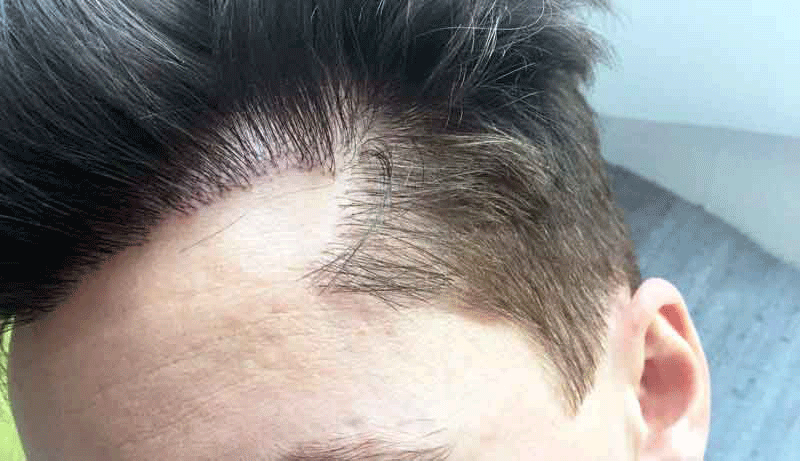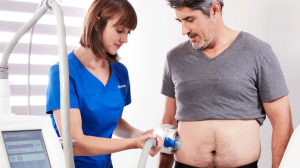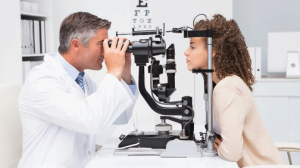Table of Contents
After informing patients about the procedure for hair transplantation, it’s necessary to tell what their expectations should be after FUE hair transplantation. If you are ready to own FUE hair transplantation, then be sure to talk to your physician in detail.
Sufficient time is required to perform hair transplantation correctly. You can’t expect completely new hair to grow in a month or a week. If you are waiting, you will be disappointed.
Care After hair transplantation
The day after the hair transplant surgery, it is common to have some blood onto your scalp. Blood is nearly never shaped, which means you don’t have to worry. There could be some swelling at the forehead area. Numbness and pain in the donor region are completely removed.
Healing from surgery
When all the grafts have implanted the donor and transplanted areas will be cleaned as well as the staff will examine the postoperative instructions (for example washing your hair the day after surgery) and you will be given pain medicines plus a spray for the grafts. For FUE processes where the donor area was shaved a dressing will be implemented over the donor area. You will then be ready to leave the clinic wearing your baseball cap. Our preference is that you arrange for a ride home since you will have gotten a sedative.
The transplanted area may have crusting or scabbing and may look pink — like a sunburn — for seven to ten days following the surgery. Patients with skin that is prone to redness may notice a small pinkness lasting marginally longer, occasionally in the range of 2-4 weeks. In the event that you had an FUE procedure using a complete donor area shave, it will take about 12 -14 days to your donor area to return to”normal”, such as you had a very short haircut. The implanted hairs will grow for two to three weeks after which the follicles will go dormant and the transplanted hair will drop out leaving you looking like you did prior to the operation.
If you’ve had a strip donor crop many individuals feel as they can go back to work the following day, except for the visibility of the scabs from the transplanted area. Patients having this procedure can resume a complete fitness and workout regimen inside a week.
After FUE you are able to resume full activities starting 3 days following the process except for swimming and actions that call for a helmet, these could be started after 7 days.
What Causes Hair Loss After Hair Transplantation?
New hair structures that show growth within a month may seem thin and dead. This, in turn, can cause people to experience depression. However, the thinness and weakness of those hairs, which have entered the new expansion phase in time, become thicker and stronger. Another circumstance is that the hair lengths aren’t equal and the hair follicles which are transplanted don’t grow at the same speed. This is perfectly normal and you do not need to be worried.
This kind of growth of new hair structures, that entered the growth stage in the initial month, should be thought to be a habituation phase. Not one of the hair that does not grow evenly, in the beginning, is short, with the conclusion of the development phase, every one of those new hair textures grows and eventually become a whole that produces a healthy, strong hair appearance.
Among the problems that happen over the first 30 days after the hair transplant surgery and induces the people to fear”did not maintain hair transplantation” is that the occurrence of hair loss. After fully healing of the scalp and areas where hair transplantation is put on, loss of hair can be observed from the 15th day to the 30th day.
Some of the newly planted hair can be shed over the first month after the operation. This is considered as something which should and needs to be expected by specialists. This spill is known as a shock spill in medicine and can be a temporary condition. It’s recognized that the hair loss problem seen after hair transplantation by professional doctors is brought on by the temporary sleep period.
Timeline for FUE TRANSPLANT
1st night
- Recipient and donor area may look bruised.
- In the donor area, you will see small red holes where the grafts are harvested that will heal within 2-3 days.
- Pain is very uncommon after FUE procedures. If present, it generally improves with mild painkillers.
- Do not touch the recipient area the first night. You don’t need to wash it the first night.
- Cover your head with the hat we provide while outdoors.
- Sleep with your head elevated to avoid rubbing off or detaching any of the grafts in your sleep. Putting 3 or 4 pillows to raise your upper body while you sleep will help you achieve the proper elevated angle.
- Avoid alcohol the night of the procedure. It may interact with the medications you are prescribed or what you took during the procedure.
Day 1
- Redness or pinkish discoloration in the recipient and donor area starts to fade. You will have some scabbing that should gradually go away after the first 5 days.
- You need to learn how to wash your hair during your appointment with us.
- You don’t need to wash your hair at home after your first hair washes with us. You will resume washing with the method that we show you on day two after your procedure.
Days 2-4
- Mild bruising or pinkish discoloration and scabbing may continue to be seen in transplanted and donor area. This will fade gradually in the first week.
- Swelling on the forehead and around the eyes will start on days 2 and 3 and it usually will reach its peak at day 4 and subsides after that. We usually provide steroids to be taken for the first few days to minimize the swelling.
- Avoid touching, scratching, or rubbing the transplanted area. Grafts will be stronger in their new home until day 4 after the procedure when they won’t be dislodged by accidental touch anymore.
- Avoid sun exposure for a long period of time. Sunburn may affect the pigmentation of the skin and can also damage the transplanted hair.
- Keep your upper body elevated during sleep to help keep the swelling on the forehead reduced.
- You can run or walk in the gym after the procedure. Don’t wipe your forehead as that may dislodge your grafts in the first 4 days.
Days 5-7
- Transplanted area: At this point, the grafts are taken and cannot be dislodged. If you still have scabbing, you should wash more aggressively until the scabs are all gone.
- Donor: By day 7, most people don’t show any sign of a procedure in their donor area.
- Itching: Some itching and mild burning at this point could be a sign of healing.
- You can leave the shampoo on longer on the transplanted area (10 or 15 minutes) to make the scabs softer and help you wash them off after the first 5 days.
- Using skin moisturizer on the scalp can help with itching. If itching is not controlled, the doctor can prescribe a mild topical steroid for it.
- You can resume all your physical activities and sports after the first 5 days.
Months 1-3
- The transplanted hair starts to grow in as thin and fine hair and becomes longer and thicker within the next few months.
- Some patients may experience thinning of their existing hair in the area which is referred to as shock loss.
- Continue taking any medication that the doctor recommended to avoid or minimize shock loss.
- Treat your scalp and hair normally with regular washing as you always do.
- Avoid prolonged sun exposure.
Months 3-12
- The transplanted hair continues to grow and becomes thicker and longer so you can style them the way you want.
- You might begin to see textural changes in the hair from fine baby hair to thick and kinky and then normal hair as it continues to grow.
Months 12-18
- The final appearance of the hair transplant is visible.
- Congratulations on making a change in your life. Enjoy your new look!
After HAIR TRANSPLANT
If FUE hair transplantation is carried out with aesthetic concerns, it’s a health practice. As a result, before you have hair transplantation, you have to do detailed research and find a specialist application center. Otherwise, it is not feasible to fulfill your expectations and you may drop money or even experience health issues. Specifically, you should listen to a physician with regard to the things to be considered after hair transplantation, use the medications he regularly gives, follows his advice, and go into a regular check. It’s best to perform the applications you will state by contacting your physician instead of producing solutions for your issues after the surgery.
Things to consider following hair transplantation are vitally important as operation. There’s no reason not to regain your old hair if you follow the rules and act diligently to get the result you expect from hair transplantation you have achieved by entering to the material and physical burden.












It is very informative information about fue hair transplant, you have deeply explained in this article what you can do after hair transplant and what to except after hair transplant. We should choose a good clinic for the surgery.